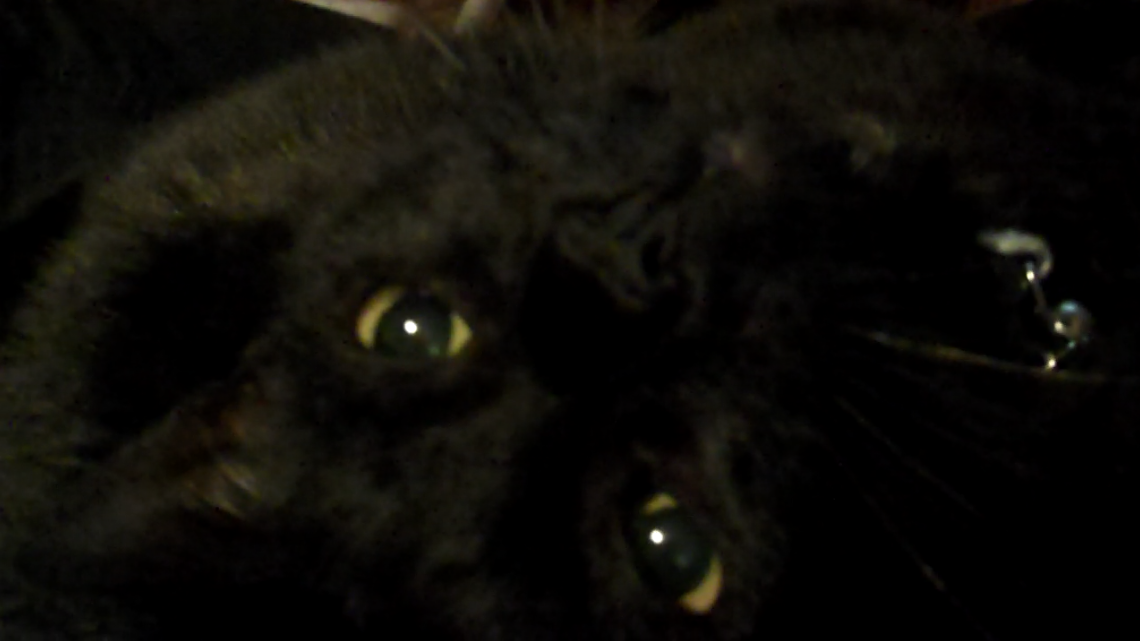In yesterday’s Guardian books blog Imogen Russell Williams explains that while she has warmed to trilogies (as long as each book stands alone) she feels the middle book of a trilogy is often the weakest.
After praising Inkheart, His Dark Materials, Peter Dickinson’s Changes, and Jonathan Stroud’s Bartimaeus she says:

Hex: Shadows
I was also a tad disappointed by the second book in Rhiannon Lassiter’s Hex trilogy. The eponymous first volume, written at the precocious age of 17, has a fascinatingly dislikeable anti-heroine, Raven, and a gripping future world in which people are literally stratified by wealth – the rich in the Heights, the gangs in the shadowy ground-level slums – and citizens with the Hex mutation are proscribed and executed. While the third book, Ghosts, feeds the reader’s yen for revolutionary action as the genocidal elite get overthrown by Hexes, the middle volume feels as though it’s marking time – Raven is captured by the security forces, but not a lot happens and not much is learnt.
Since Imogen mentioned the Hex trilogy I’m going to respond to those comments. Firstly, I should say how pleased I am that the Hex books have stayed in her mind, over ten years since they were published. There are thousands of trilogies she could have used as an example so simply being remembered ten years after the fact is a triumph of sorts.
I also am inclined to agree that middle books of trilogies can be the weakest since theirs is the toughest job. The first book begins with a bang and takes the reader into a new world. The last book ends with another bang, concluding a story that has taken three books to tell. The work that falls to the middle book is to broaden and deepen the story, to add another dimension to the characters and the world. This is difficult to pull off in an action adventure where the plot must wind its way through a valley in the shadow of two obvious peaks. No wonder that middle books, as is sometimes said of middle children, are the least loved.
If Hex: Shadows didn’t work for Imogen, that’s a fair comment. There’s no rule that everyone has to like all my books – although what a boost to sales such a rule would be! But looking back on it I recall a fair few things happening in that book. (Spoilers ahead: so if you haven’t read the Hex trilogy you might want to skip the next part of this post.) In the first book of the trilogy Raven and her brother Wraith comb the streets of a high-rise London for their missing younger sister Rachel, adopted away from their family and at risk from a totalitarian government. Making contacts in the underworld they eventually track Rachel down to a secret government laboratory where she is the victim of sadistic experiments at the hands of the evil Dr Kalden. Hundreds of other similarly brutalised children perish and Rachel and two others are the only ones to be rescued by our heroes. Here endeth the first book.
In book two, I could have marked time until the inevitable conflict with Kalden in book three. But instead I chose to take the novel into what felt like darker territory. In Hex: Shadows the security forces strike back… perhaps an unconscious homage to the incredibly bleak middle episode of the original Star Wars trilogy. Hex: Shadows begins with a betrayal. A new recruit to the team reports Raven’s whereabouts to the government. After all that effort to rescue Rachel in book one, in book two Rachel is trapped with the heroine Raven and her sidekick Kez while the security forces close in from all sides. Rachel dies and Kez and Raven are captured. Raven’s Hex abilities are now put to the test as she becomes the experimental subject in the latest round of Kalden’s quasi-scientific sadism. Without access to any of her resources from book one, Raven must break through the devices being used to torture her to get a message to her confederates on the outside. As the book moves towards the conclusion the characters must put their faith in the person who betrayed them – while Raven transcends the torture and kills the sinister Dr Kalden herself. There surely can’t be many middle books of trilogies in which the hero kills the villain! My editors at the time must have wondered what would be left for book three.
The action of Hex: Shadows allowed me to take the story forward so that I could explore bigger and more radical ideas in book three. In Hex: Ghosts Kalden returns as a ghost-in-the-machine, far more deadly as a computer virus than he was as a man. And Raven is no longer a casual adjunct to the core group, the skilled consultant who doesn’t care about the main mission. By book three the cause of the Hexes has become personal and her closest friend is the person who betrayed her to the government in book two. What’s more, Kalden’s experiments have had an unexpected result: since not only has Kalden escaped into the computer network, Raven has set foot on the path that leads to true transcendance of the physical world. Everything that happens in Shadows is necessary for Ghosts.
The middle book might have as much action as books one and three – although there’s a pretty kickass firefight where I fly a flitter into a building and down a corridor with inches to spare. But action’s not the only thing that takes a plot forward. The changes in Raven are internal and emotional, the changes in the rest of a group a response to that shift. I do regret an editorial change which de-emphasised Raven’s cold decision to rid the world of Kalen. Macmillan felt that cold-blooded murder, even of a torturer, was too strong for a YA novel in the 1990s. Other than that, I’ve content with what I achieved in Shadows and I’d encourage Imogen to re-read the trilogy: not only as an action-adventure but as a coming-of-age story in a bleak and shadowy world.
But then I’ve always had a special love of middle books. At 10 years old I dressed myself in black and told my family to call me Arha: The Eaten One, after falling in love with the middle book of the Earthsea trilogy: the magnificent Tombs of Atuan. And then there’s Ann Halam’s (Gwyneth Jones) Daymaker trilogy. The middle book, Transformations, is the darkest and the most disturbing of the three. Among my friends and professional colleagues Pullman’s middle book The Subtle Knife is often cited as the favourite. Critics have also admired Rowling’s Prisoner of Azkaban: the third of seven and to me the darkest of the Harry Potter books. (The novel won the 1999 Whitbread Book Award, the Bram Stoker Award, the 2000 Locus Award, and was short-listed for other awards, including the Hugo.)
In the Guardian blog Imogen comments: “I’m all for dark and uncompromising children’s literature, but upping the ante… after [a] first volume’s gentle, PG-rated antics is baffling to me… A good rule of thumb, in fact, is probably to avoid dedicating book two to the protagonist’s capture and imprisonment.” But I suspect the darkness at the heart of a series is best found in the middle book. George Lucas knew what he was doing in The Empire Strikes Back. A series in which the heroes win, win and win again lacks the drama of one in which they win, lose, and have to win decisively and permanently against not just the representatives but the whole political system. The middle book is a story of failure, of hopes blighted and trust betrayed. It’s a book in which the characters first feel a sense of the magnitude of their mission, the promises they have to keep and miles to go before they sleep.
Middle books may be the hardest to write and perhaps the hardest to read. But they’re the pivotal ones. So when you praise the oldest sibing and pet the youngest of three: spare a thought for those middle children of trilogies, working as hard or harder to prove themselves and stand out on their own.


